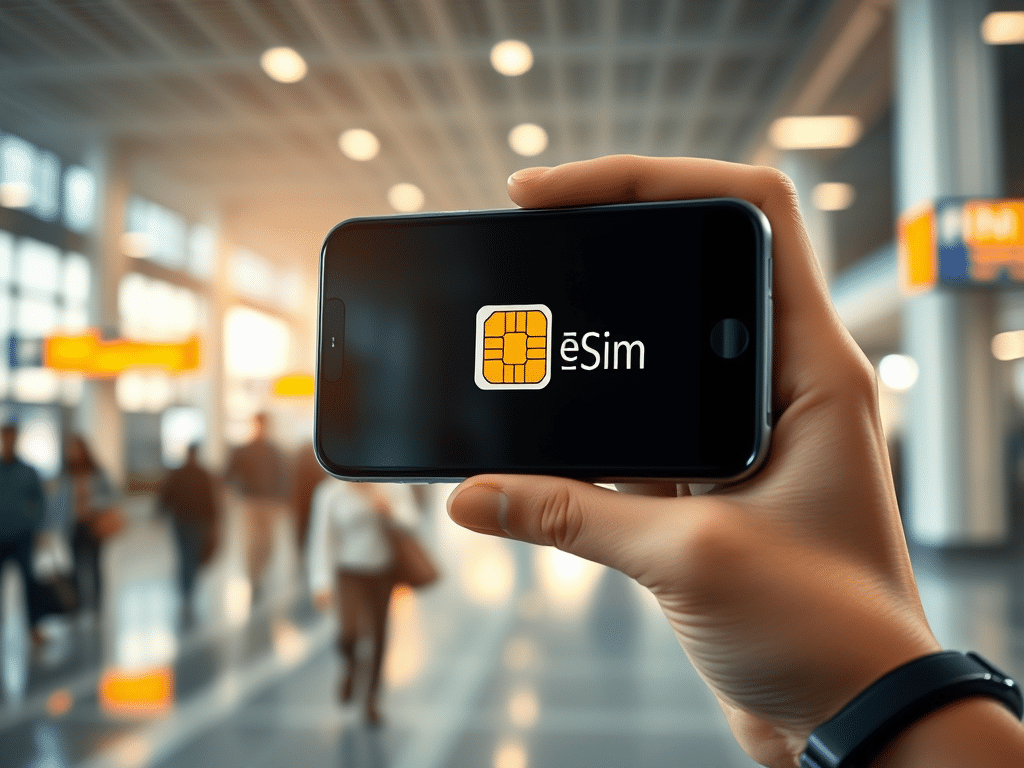Introduction
Staying connected while traveling is essential, whether for navigation, communication, or sharing your adventures. A lack of understanding about mobile connectivity options can lead to unexpectedly high bills, as I learned from a recent trip to Thailand where my bill soared to nearly £450 in one month. This Traveler’s SIMs or eSIMs Guide will help you understand the options available, including traditional SIM cards and eSIMs, and how they cater to the needs of travelers.

What are SIMs and eSIMs?
SIM Cards (Subscriber Identity Module): You insert this small, physical card into your phone to connect to a mobile network. It stores your mobile number, network authorization data, and some personal information.
eSIMs (Embedded SIMs): This digital SIM is embedded in your device. Unlike traditional SIMs, eSIMs do not require a physical card and you can activate them through software.
Benefits of Traditional SIM Cards
- Wide Compatibility: They work with most devices, especially older models.
- Flexibility: Easy to swap between phones.
- Availability: You can easily find them in most countries at airports, shops, or online.

Benefits of eSIMs
- Convenience: No need to physically change SIM cards, reducing the risk of losing them.
- Multiple Profiles: You can switch between different carriers and plans without changing the SIM.
- Instant Activation: Activate them instantly via a QR code or app, often without needing to visit a store.
Types of SIM Solutions for Travelers
Physical SIM Cards: Purchase a local SIM upon arrival to enjoy local rates.
eSIMs: Activate a local or international plan before or during your trip through your device’s settings or a dedicated app.
App-Based SIM Services: Some apps provide virtual SIM services that operate as eSIMs, offering competitive rates and easy management.
The Importance of Comparing Offers
Before traveling, compare what your home country provider offers, not just for data but also for calls. In emergencies, making a call can significantly increase your mobile bill. Understanding your provider’s international roaming packages can prevent unexpected costs and ensure you remain connected without breaking the bank.
Ensure Your Phone is Unlocked
Before you leave, check if your phone is unlocked. An unlocked phone allows you to use local SIM cards or eSIMs from different carriers, giving you more flexibility and potentially better rates.

Choosing the Right Option
- Destination Considerations: Research the availability and reliability of SIM and eSIM providers in your destination.
- Device Compatibility: Ensure your smartphone supports eSIM technology if you plan to use it.
- Usage Needs: Consider your data, call, and text needs when selecting a plan.
Conclusion
Both SIM cards and eSIMs offer distinct advantages for travelers. Whether you prefer the traditional route or the convenience of digital solutions, staying informed about your options ensures you remain connected effortlessly while exploring new destinations.
Share your experiences with SIMs and eSIMs in the comments below. Have a preferred method for staying connected while traveling? Let us know!
Before you go…
If you’re vegan or just looking for cruelty-free supplements, chocolate, or meal kits, here are a few brands worth checking out.
Dr. Vegan make fully plant-based supplements with clear ingredients. Use code DR15 to get 15% off.
The links above are affiliate links. If you click through and buy something, I may earn a small commission at no extra cost to you.

